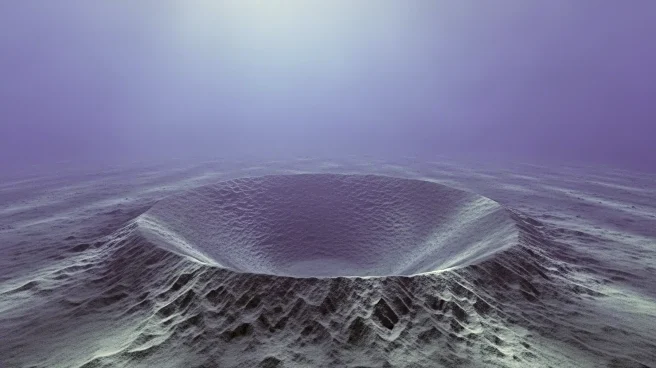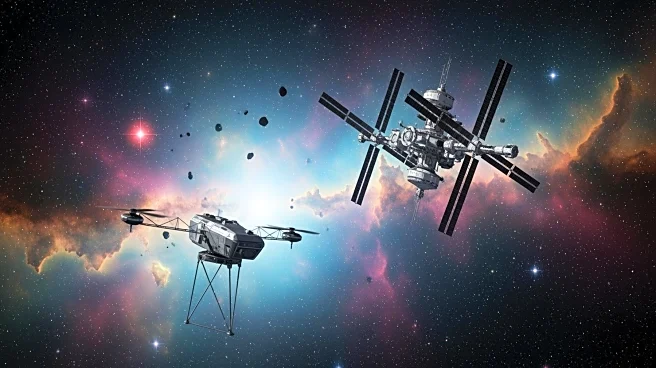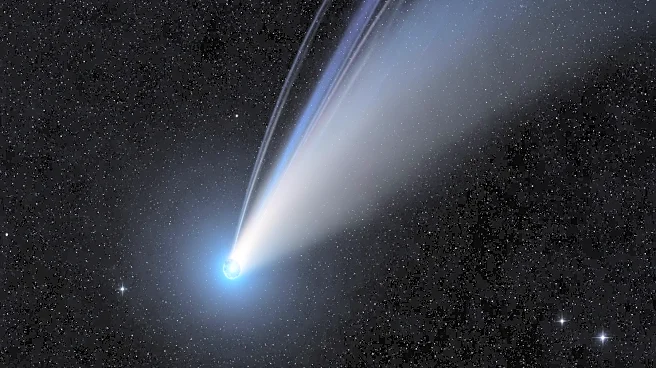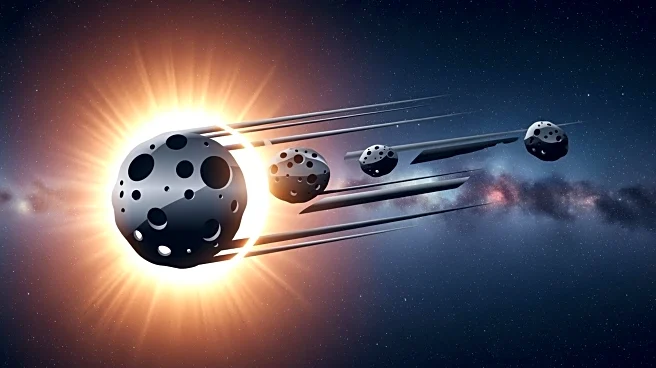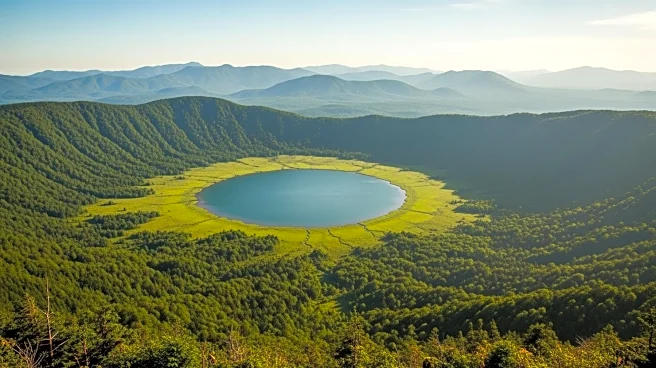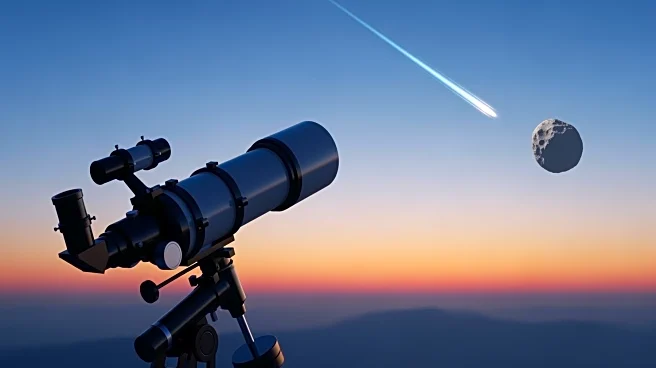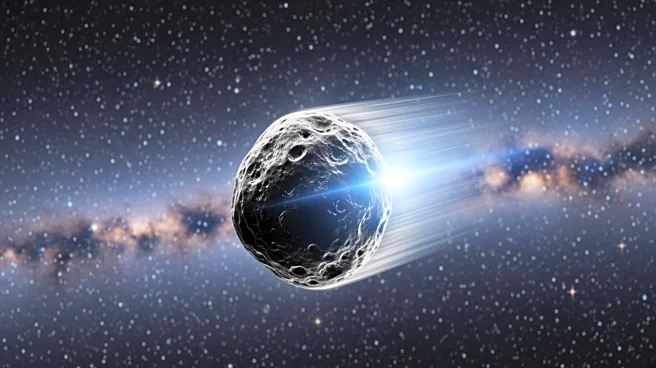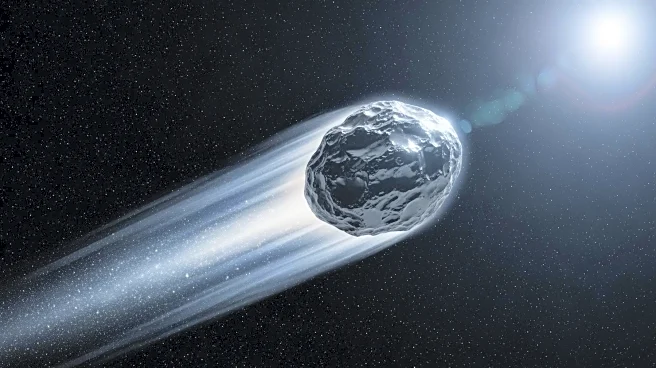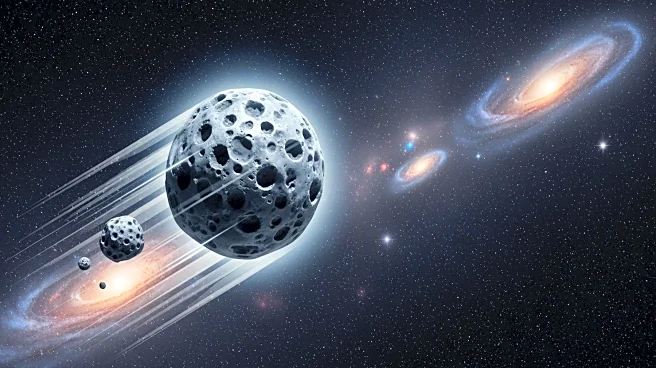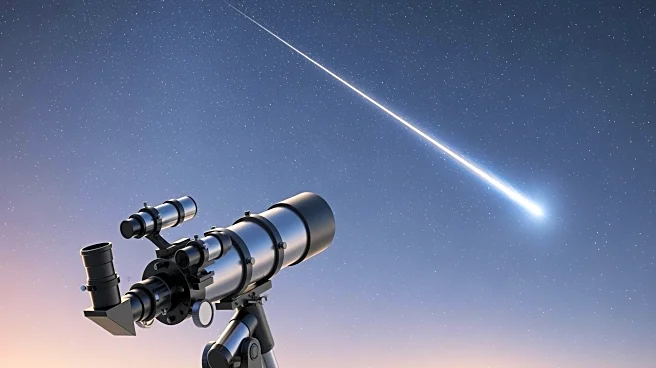What's Happening?
Researchers from Heriot-Watt University have unveiled detailed 3D images of the Nadir Crater, an asteroid impact site located beneath the Atlantic Ocean floor. The crater, approximately 5.6 miles wide,
was formed by an asteroid impact around 66 million years ago, coinciding with the end of the Cretaceous period. This discovery was made using high-resolution seismic data, which allowed scientists to reconstruct the events following the impact, including the formation of a massive tsunami. The crater's identification and analysis provide a unique opportunity to study impact processes and crater formation in marine environments.
Why It's Important?
The revelation of the Nadir Crater offers significant insights into Earth's geological history and the effects of asteroid impacts. Understanding the formation and consequences of such craters can help scientists develop models to predict future impacts and their potential effects on the planet. This research also contributes to the broader field of planetary science, offering comparisons with craters on other celestial bodies. The study of the Nadir Crater could lead to advancements in impact crater hypotheses and improve our understanding of Earth's evolution and its vulnerability to extraterrestrial threats.
What's Next?
Researchers have applied to an international drilling program to extract cores from the Nadir Crater, which will provide more detailed information about the impact's shock pressures and the sequence of events following the collision. These findings could refine existing models of crater formation and impact processes. Additionally, the study of the Nadir Crater may inform future strategies for monitoring and mitigating potential asteroid threats, as scientists continue to assess the risks posed by near-Earth objects like the asteroid Bennu.
Beyond the Headlines
The discovery of the Nadir Crater highlights the importance of advanced imaging technologies in uncovering hidden geological features. It also underscores the need for international collaboration in scientific research, as experts from various fields and countries contribute to a comprehensive understanding of Earth's history. The study of ancient impact events can also inform discussions on planetary defense and the development of strategies to protect Earth from future asteroid impacts.
